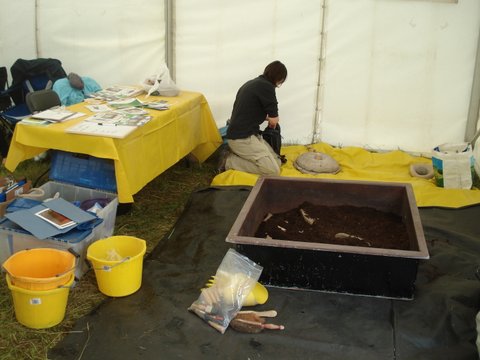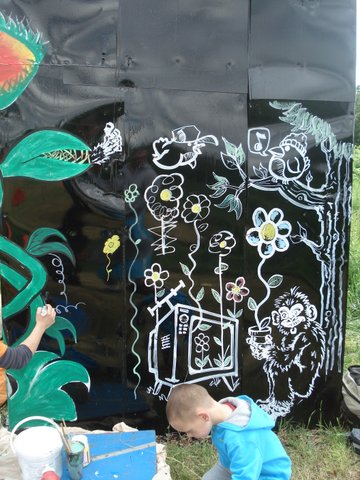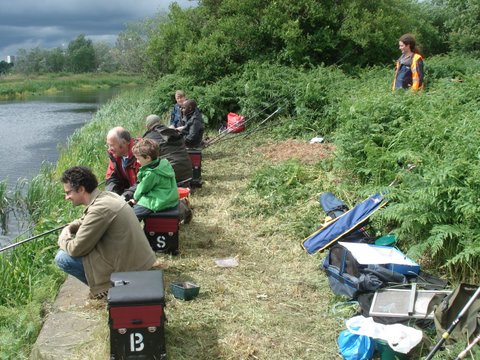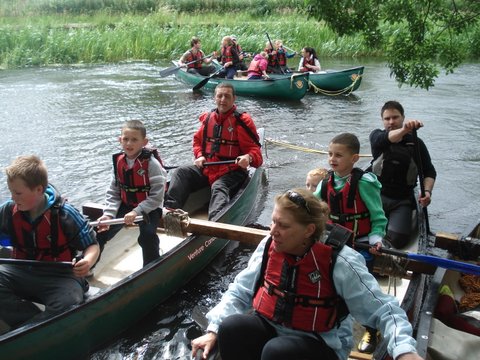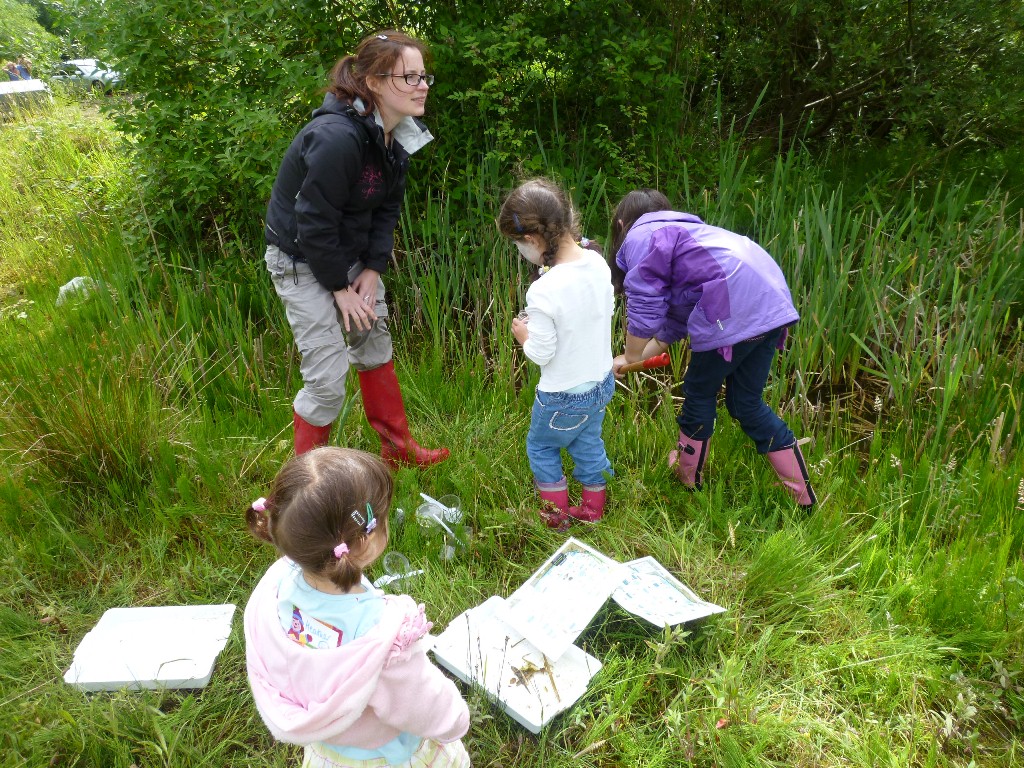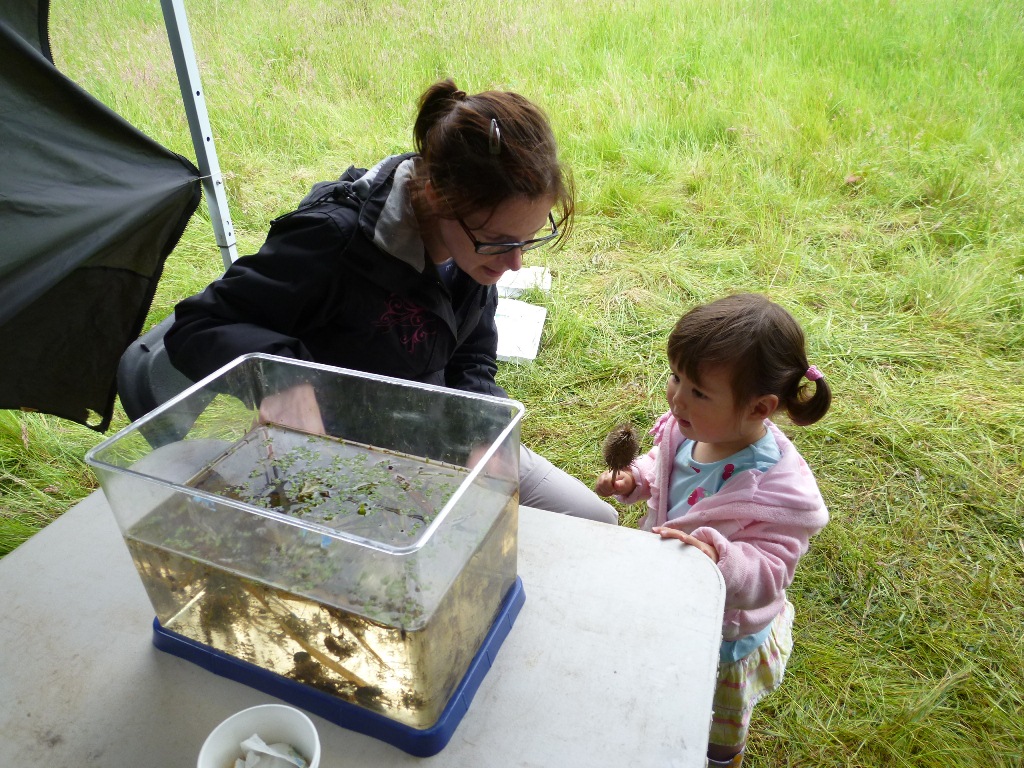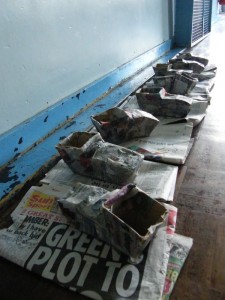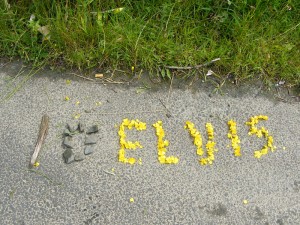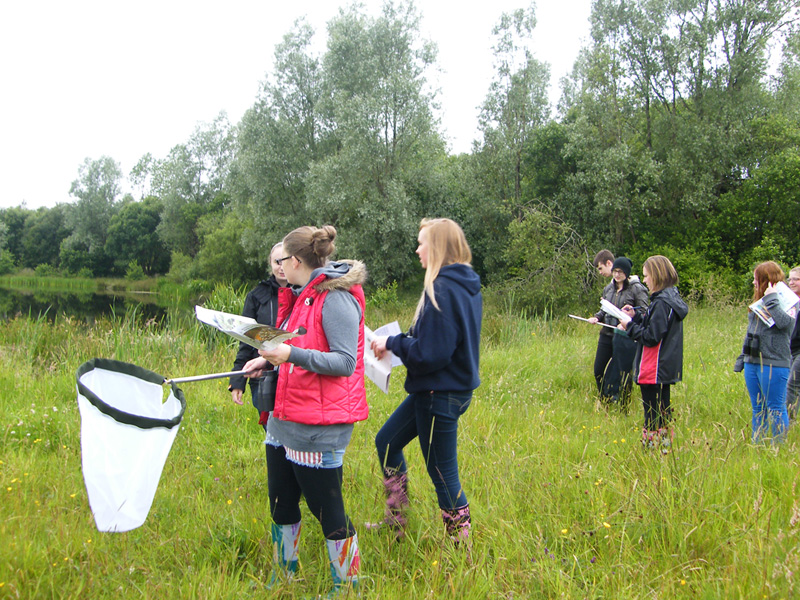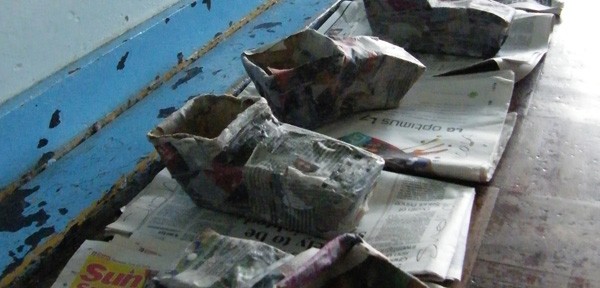
One of the first things I did when I came to this post was get involved in the organisation of a large community event. The Friends of Possilpark Greenspace approached Glasgow City Council just before I joined to invite them along to the event, so without hesitation I jumped on board; eager to get involved. On the 30th June this event named ‘Bats, Beasties and Buried Treasure’ took place at Hamiltonhill Claypits, Possilpark.
The Claypits is a Brownfield Site; 25 acres of urban wildness that runs alongside the Forth and Clyde Canal, from Applecross Basin to Firhill Basin on the South-West slopes of Hamiltonhill, adjacent to the Hamiltonhill community allotments. This is known as the ‘coup’ to the locals, notorious for commercial fly-tipping at the entrance, with large amounts of Aluminium drink cans dumped in a number of areas, and access to the site previously unclear or unwelcoming. However, The Friends of Possilpark Greenspace believe it has huge potential for conservation and recreation for the local community and the wider city, and as such have been working to resolve these issues. Their ambition is for the site to become Local Nature Reserve, and so far they have managed to dramatically reduce fly-tipping (commercial fly-tipping has stopped as the entrance has been improved and looks far more welcoming, rather than a ‘no go’ area) and the cans that were being dumped by local residents that own doocots and are now being gathered in the one place so that they can be collected to be recycled. The future of this site looks promising, as does the future of the wildlife it holds, and with the community on board I really see this site achieving Local Nature Reserve status at some point in the not-too-distant future.
The Friends of Possilpark Greenspace, Depot Earth Environmental Arts, A Rocha, Clay Community Church, Archaeology Scotland, the Waterways Trust and Children’s Inclusion Partnership (CHIP) who are all organizations in the Possil community, pulled together to put on a fun-packed, activity filled day for the whole community. There were many different zones on the site, each of which had different activities for the public to take part in.
At Base Camp – Doocot Art, a Cooking Demo showing ways to cook low cost, low effort food using locally source ingredients, a Treasure Hunt and an Archaeological Dig for those wishing to discover the hidden treasures of what life was like at the Claypits in the past.
At The Bug Out Zone – The Clyde Bat Group with bat sounds to listen to, Make a Bug Hotel, Wildflower Seed Bombs, Arts & Crafts, Children’s Inclusion Partnership with their ‘Build A Recyclable Rainbow Man’, made from old toys and shampoo bottles.
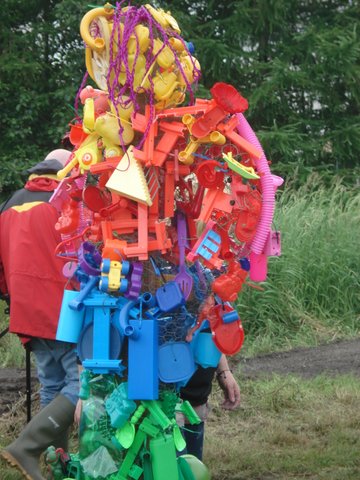 At The Clay Zone – Mountain Biking, Drawing and Clay Workshop.
At The Clay Zone – Mountain Biking, Drawing and Clay Workshop.
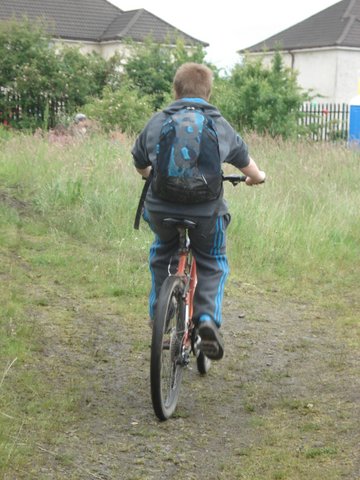 The Aqua Zone – Fishing and Canoeing.
The Aqua Zone – Fishing and Canoeing.
The Beautiful Conservation Zone – Butterfly, Bee, Bugs and Plant Surveys, Pond Dipping and building a Hibernaculum. This is where I helped out!
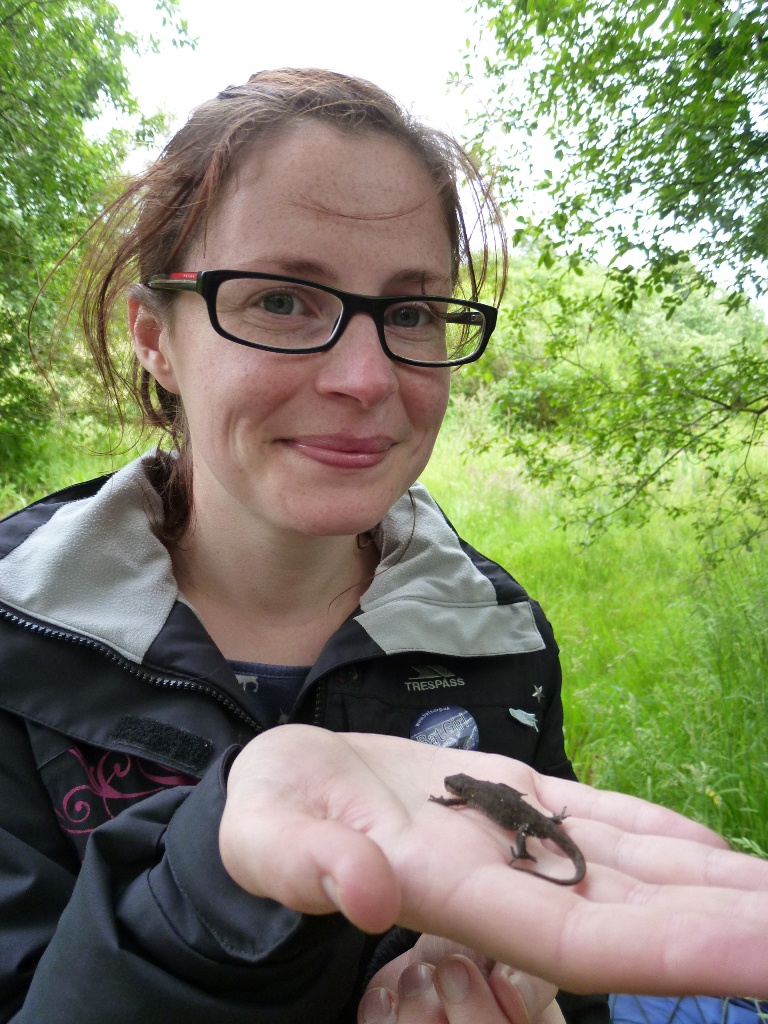 At the end of the day there was storytelling session, but the event didn’t stop there; come nighttime myself and one other member of The Clyde Bat Group led a bat walk from the Waterways Trust Headquarters along the canal opposite the Claypits and back again. We detected and caught a really good glimpse of Daubenton’s Bats which feed on insects over the canal water, and Soprano Pipistrelles feeding on moths right above our heads! A high point of my night was spotting a tiny mouse eating a berry in the hedge row beside the path and squeaking rather joyfully. I have a bat ecology training course coming up next month in Dumfries & Galloway and I am very excited about it! I studied bats in Bolivia in 2005, and I have also had the good fortune of being able to handle different species here in Scotland (such as Pipistrelles and the Brown Long-Eared Bat; see picture below).
At the end of the day there was storytelling session, but the event didn’t stop there; come nighttime myself and one other member of The Clyde Bat Group led a bat walk from the Waterways Trust Headquarters along the canal opposite the Claypits and back again. We detected and caught a really good glimpse of Daubenton’s Bats which feed on insects over the canal water, and Soprano Pipistrelles feeding on moths right above our heads! A high point of my night was spotting a tiny mouse eating a berry in the hedge row beside the path and squeaking rather joyfully. I have a bat ecology training course coming up next month in Dumfries & Galloway and I am very excited about it! I studied bats in Bolivia in 2005, and I have also had the good fortune of being able to handle different species here in Scotland (such as Pipistrelles and the Brown Long-Eared Bat; see picture below).
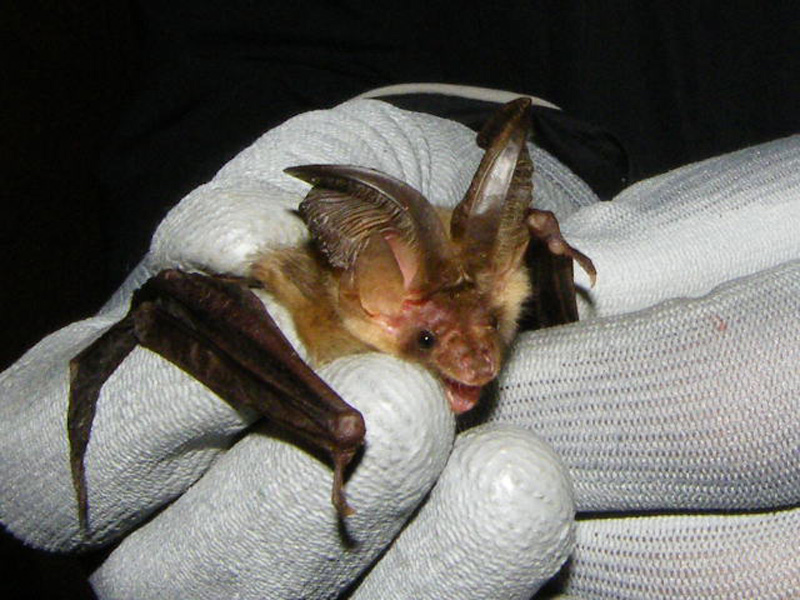 I never thought I would be spending my day looking after farm animals on a small piece of land in a housing estate in North Glasgow. Well … that’s just what I got up to a few weeks ago when CHIP organised a Pop-up Farm on Byshot Path. For those of you who haven’t read my blogs before, this is a small piece of land that CHIP and I have been carrying out nature activities on with the local children. The site is owned by the Housing Co-operative and they have recently given CHIP funds to use on the site. They plan to use the budget to help make this site into a community friendlier space; one they feel connected to and have a sense of pride over, and that CHIP can use to engage with children. At present the site holds little value or respect from some of the surrounding community. However CHIP have been working with the community and the Housing Co-operative to resolve issues such as grafitti and dog fouling; over the last few months, and certainly the months I have been around, it has seen a dramatic reduction in dog fouling, the wall is no longer covered in graffiti (instead covered in moss/lichen) and there are wildflowers planted by the children. The aim of the Pop-up Farm was to bring a bit of rural life to a very urban community and try and increase the community’s sense of connection to this site, giving them something positive to associate it with. There were two Chickens, two Goats and a Pony called Primrose. Some of the community had never seen or touched these animals before, so it was a real pleasure to see them enjoy it for their very first time.
I never thought I would be spending my day looking after farm animals on a small piece of land in a housing estate in North Glasgow. Well … that’s just what I got up to a few weeks ago when CHIP organised a Pop-up Farm on Byshot Path. For those of you who haven’t read my blogs before, this is a small piece of land that CHIP and I have been carrying out nature activities on with the local children. The site is owned by the Housing Co-operative and they have recently given CHIP funds to use on the site. They plan to use the budget to help make this site into a community friendlier space; one they feel connected to and have a sense of pride over, and that CHIP can use to engage with children. At present the site holds little value or respect from some of the surrounding community. However CHIP have been working with the community and the Housing Co-operative to resolve issues such as grafitti and dog fouling; over the last few months, and certainly the months I have been around, it has seen a dramatic reduction in dog fouling, the wall is no longer covered in graffiti (instead covered in moss/lichen) and there are wildflowers planted by the children. The aim of the Pop-up Farm was to bring a bit of rural life to a very urban community and try and increase the community’s sense of connection to this site, giving them something positive to associate it with. There were two Chickens, two Goats and a Pony called Primrose. Some of the community had never seen or touched these animals before, so it was a real pleasure to see them enjoy it for their very first time.
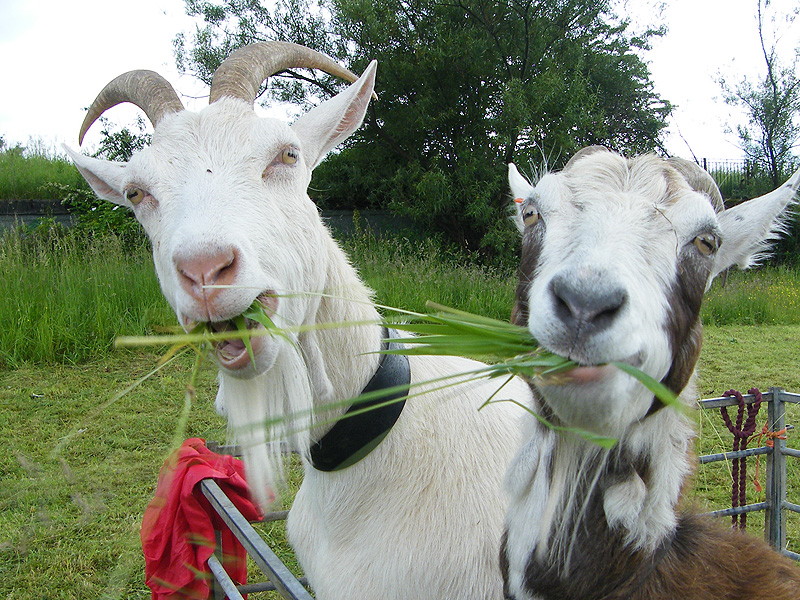
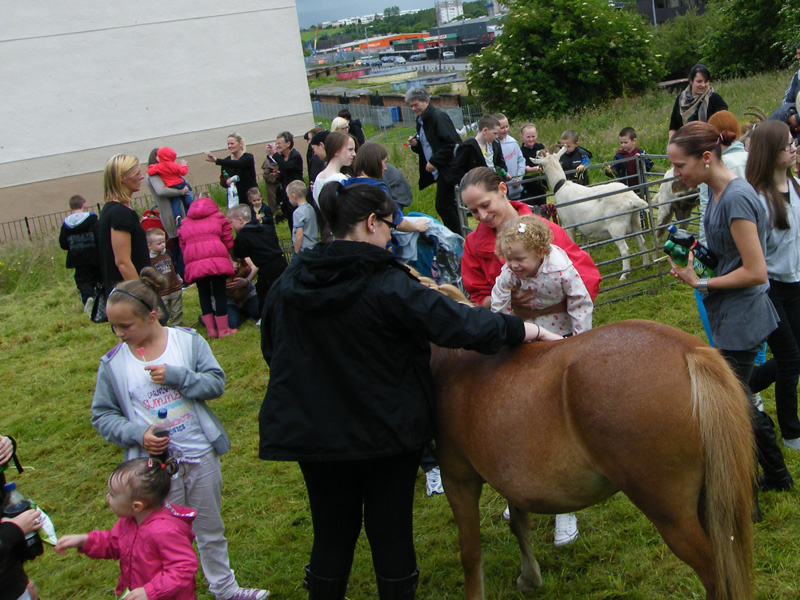
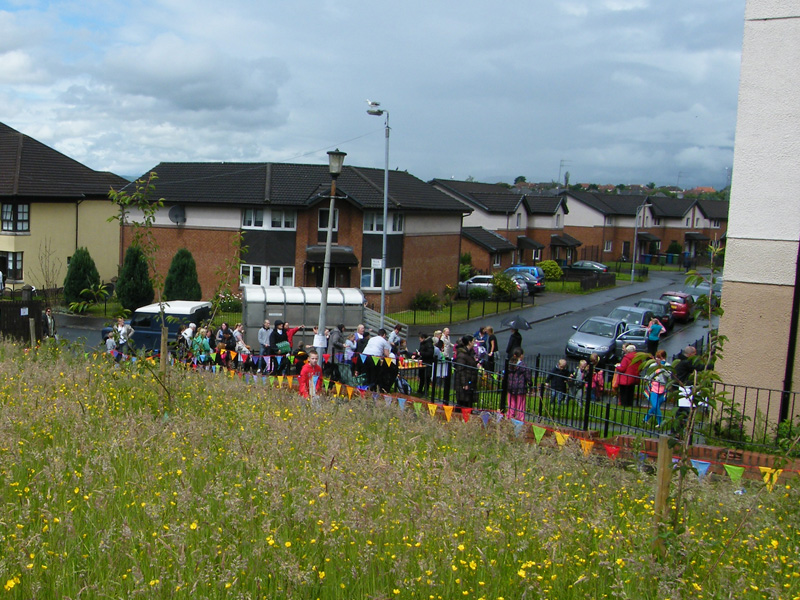 The Pop-up Farm gave me the perfect opportunity to speak to children and parents, and tell them about the John Muir Award that I will be leading children through as part of my personal project required during my traineeship, both on this site and another site around the corner called Possil Meadow (a small brownfield site). Having recently attended a Bumblebee identification workshop and an Invertebrates on Brownfield Sites workshop, I feel it is my duty to make our first session a mini beast hunt! CHIP have also organised a dog show on Possil Meadow next month, the aim of which is to encourage the community to pick up after their dogs and again help them to associate this site with someting positive and fun. So stay tuned if you want to see some more furry creatures and smiley faces!
The Pop-up Farm gave me the perfect opportunity to speak to children and parents, and tell them about the John Muir Award that I will be leading children through as part of my personal project required during my traineeship, both on this site and another site around the corner called Possil Meadow (a small brownfield site). Having recently attended a Bumblebee identification workshop and an Invertebrates on Brownfield Sites workshop, I feel it is my duty to make our first session a mini beast hunt! CHIP have also organised a dog show on Possil Meadow next month, the aim of which is to encourage the community to pick up after their dogs and again help them to associate this site with someting positive and fun. So stay tuned if you want to see some more furry creatures and smiley faces!
It seems I have been doing alot in the North of Glasgow recently. This month I received the good news that my application to CSV Action Earth was granted! I now have around £500 to carry out my community project ‘Wild For Art’ with young people at Robroyston Local Nature Reserve. The project is aimed at raising the profile of the site, increasing biological recording and gaining new volunteers to assist with conservation at the site. The people I am working with are aged between 13-18; a group that my placement provider found difficult to engage with. I am hopeful that the exercise has some positive outcomes for everyone; from my experience the use of creative approaches linked to conservation (particularly artistic activities) tend to be more readily embraced by a young audieince. I’m currently in the middle of carrying out this project, and I will update you all very soon on its progress. That said, here is a sneak preview of what we’ve been up to so far … I shall leave you guessing as to what we’re up to from the pictures. Gotta be mean to keep you keen 😉

